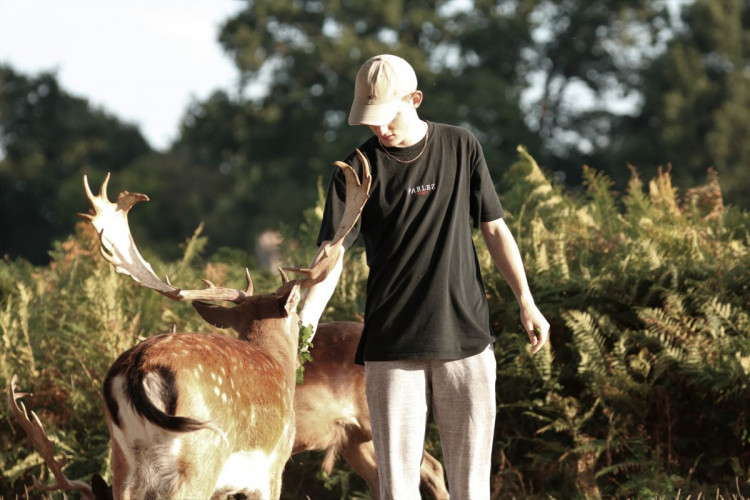Feeding deer in Richmond and Bushy parks ‘likely to fuel attacks on visitors’
By The Editor 18th Apr 2023
By The Editor 18th Apr 2023

Feeding deer in the Royal Parks risks creating a new generation of larger more aggressive animals, according to academics.
At the same time, it could fuel a population explosion, so increasing the scale of the controversial annual culls that are needed to control the numbers.
The concerns have been raised by a team from the University of Dublin, who looked at the impact of feeding deet in the city's Phoenix Park and say their findings will apply equally to others.

Both Richmond and Bushy Park have problems every year with visitors feeding what are wild animals with some evidence of attacks, posted on social media.
The Royal Parks have warned that feeding the deer is 'the opposite of kind'. At the same time, they have issued a plea to visitors to take away their rubbish with evidence of begging and scavenging deer tucking into waste from overflowing bins.
A research paper, published by the Royal Society Open Science, found bolder deer that beg for food become bigger and stronger, while also having larger fawns than their more timid counterparts.
The paper stated: "If this begging behaviour is transmitted from mother to offspring and these offspring have a better chance of survival, then our research indicates that this behaviour is being artificially selected for by these feeding activities.
"This would mean that this bolder, begging behavioural type could become more predominant in wild populations over time and that the risk of injury to humans could also increase."
Lead research author, Laura Griffin said: "In other words, in 10 years, if actions are not taken, you could end up with deer that consistently harass people, as the boldest individuals have been selected for, which clearly holds enormous risks for the people and animals involved."

In the study, it was found that the entire deer population in Phoenix Park fell into three categories: consistent beggars, occasional beggars, and rare beggars.
The deer that begged more received the largest amount of human food, and this included bread, crisps, carrots, apples and biscuits, leading them to have a drastically different diet from those classed as rare and occasional beggars.
The feeding of the deer in Richmond and Bushy parks has been associated with the rise of the Selfie culture with people keen to post the images and video on social media. At the same time, people may believe they are helping the deer when, in reality, they could be doing more harm than good.
She told the Irish Independent: "Videos and pictures of people feeding wildlife quite often go viral across different social media platforms.

"Nevertheless, it is of fundamental importance that we pause to explore how these interactions are affecting the wildlife involved."
One of the consequences is that more fawns will grow to become full adults, creating a larger population than a particular park can safely manage.
The research paper stated: "If the provision of food to these wild individuals by humans is resulting in advantages for select individuals and the
increased survival of their offspring, then there may potentially be associated population explosions that would require more regular and costly culling actions.
"If this is the case, then effective management of these feeding activities may prevent the need for increased culling before it even occurs. This would be invaluable for public relations between the local communities and park managers, as culling activities are already recognised as a controversial topic for members of the public, but this is something that requires further exploration."
The Royal Parks warned: "By feeding the deer you are teaching them to approach humans for food, which is dangerous for all visitors.
"The deer roam free and we want them to enjoy a life that is as wild as possible, however they should be enjoyed from afar, not harassed by visitors shoving branches, or human food, in their faces.
"The herds of deer in both parks in London are wild and do not require feeding from the public. They are herbivorous, so feed on grasses, leaves and shoots of trees, and other woody plants. The two parks, which have a combined size of 3,600 acres, have an abundance of natural food suited to the deer's nutritional needs."
CHECK OUT OUR Jobs Section HERE!
twickenham vacancies updated hourly!
Click here to see more: twickenham jobs
Share:














